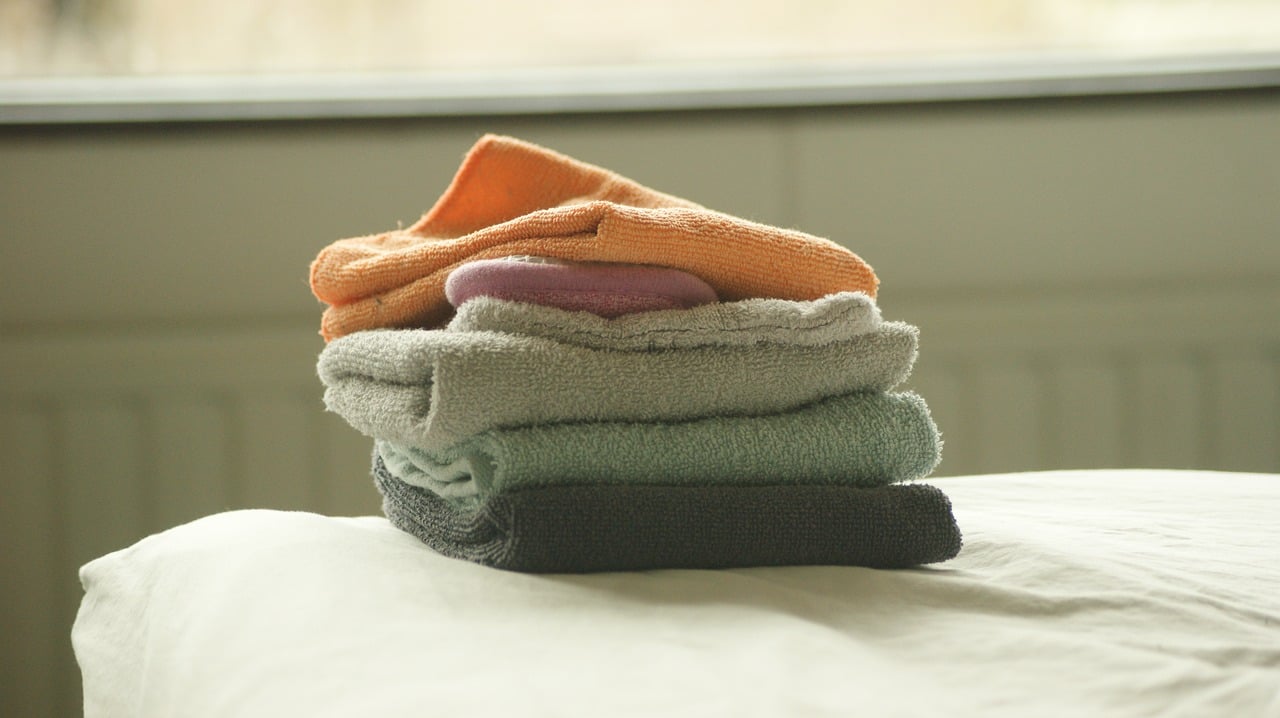
Laundry detergent is a household staple, yet many of us don’t think twice about the type or brand we use. With a vast array of options available in the market, from powders to liquids to pods, choosing the right laundry detergent can be overwhelming. Each type of detergent offers unique benefits and caters to different washing needs, and the ingredients can vary significantly, impacting everything from stain removal effectiveness to skin sensitivity.
In this comprehensive guide, we’ll explore the different types of laundry detergents, break down their ingredients, and offer tips on how to choose the best one for your specific needs. Whether you’re shopping at [Walmart] or your local grocery store, this guide will help you make an informed decision that will keep your clothes fresh, clean, and long-lasting.
Understanding the Different Types of Laundry Detergents
Laundry detergents come in various forms, each designed to tackle different cleaning challenges. The three most common types are powder, liquid, and pods. Let’s take a closer look at each.
1. Powder Laundry Detergent
Powder laundry detergent has been around for decades and remains a popular choice for many households. It typically comes in a box or large plastic bag and is scooped directly into the washing machine.
Pros of Powder Laundry Detergent:
- Cost-Effective: Powder detergents are often less expensive than their liquid or pod counterparts, making them an economical choice for large families or those who do frequent loads of laundry.
- Effective Stain Removal: Powders tend to be more effective at removing ground-in dirt and clay stains, making them ideal for heavily soiled items like work uniforms, sports gear, and outdoor clothing.
- Long Shelf Life: Powder detergents have a longer shelf life compared to liquids, as they do not contain water that could cause the detergent to degrade over time.
Cons of Powder Laundry Detergent:
- Inconsistent Dissolving: One of the main drawbacks of powder detergent is that it doesn’t always dissolve completely in cold water, which can lead to residue on clothes. This is especially true in areas with hard water.
- Messy Application: Pouring and measuring powder detergent can be messy, and it’s easy to spill or overuse.
2. Liquid Laundry Detergent
Liquid laundry detergent is another popular option and is typically sold in large bottles with a measuring cap. Liquid detergents are versatile and can be used for both pre-treating stains and washing clothes.
Pros of Liquid Laundry Detergent:
- Easily Dissolves: Liquid detergent dissolves easily in both cold and hot water, reducing the risk of residue on clothing. This makes it a great option for cold-water washes.
- Effective on Oily Stains: Liquid detergents excel at removing greasy or oily stains, making them ideal for washing items like kitchen towels, athletic wear, and everyday clothing.
- Convenient for Pre-Treatment: The liquid form makes it easy to apply directly to stains for pre-treatment, helping to lift tough stains before the washing cycle even begins.
Cons of Liquid Laundry Detergent:
- More Expensive: Liquid detergents can be more expensive than powders, especially if you tend to use more than the recommended amount.
- Environmental Impact: The plastic bottles used for liquid detergents contribute to plastic waste, which is a concern for environmentally conscious consumers.
- Shorter Shelf Life: Liquid detergents have a shorter shelf life compared to powders, particularly if they contain enzymes that can degrade over time.
3. Laundry Detergent Pods
Laundry detergent pods, also known as packs or capsules, are the latest innovation in the laundry detergent market. These pre-measured, single-use pods contain concentrated detergent, often with added stain removers and fabric softeners.
Pros of Laundry Detergent Pods:
- Convenience: Pods are incredibly convenient and easy to use—just toss one into the washing machine, and you’re done. There’s no need to measure, which reduces the chance of overuse.
- Minimal Mess: Since pods are pre-measured and individually wrapped, there’s no risk of spills or mess, making them a clean and tidy option.
- Concentrated Formula: The detergent in pods is typically more concentrated, which can mean more effective cleaning power per load.
Cons of Laundry Detergent Pods:
- Higher Cost: Pods tend to be more expensive per load compared to powders and liquids. This can add up, especially for large households.
- Risk of Improper Dissolution: In some cases, pods may not dissolve completely, particularly in cold water or short cycles, leaving a residue on clothes.
- Safety Concerns: Pods can be dangerous if ingested, particularly for young children or pets, so they must be stored securely out of reach.
Key Ingredients in Laundry Detergents
Understanding the ingredients in your laundry detergent can help you make a more informed decision, particularly if you have specific concerns such as skin sensitivity, environmental impact, or the effectiveness of stain removal. Below are some common ingredients found in laundry detergents.
1. Surfactants
Surfactants are the primary cleaning agents in laundry detergents. They work by reducing the surface tension of water, allowing it to more effectively penetrate fabrics and remove dirt and oils. Common surfactants include:
- Anionic Surfactants: Effective at removing greasy and oily stains.
- Nonionic Surfactants: Milder and less likely to cause irritation, making them suitable for sensitive skin.
2. Enzymes
Enzymes are proteins that break down specific types of stains. Different enzymes target different stains:
- Proteases: Break down protein-based stains like blood, sweat, and food.
- Amylases: Target starch-based stains from foods like pasta and rice.
- Lipases: Effective against fat and oil-based stains.
Enzyme-based detergents are particularly effective for stain removal but may be more expensive.
3. Builders
Builders enhance the effectiveness of surfactants by softening the water and helping to break down soil. Common builders include:
- Sodium Carbonate (Washing Soda): Helps to soften water and remove grease.
- Zeolites: Serve as water softeners and help to prevent mineral buildup in the washing machine.
4. Optical Brighteners
Optical brighteners are chemicals that deposit on fabric fibers and reflect light, making clothes appear brighter and whiter. While they don’t actually clean the clothes, they can make laundry look fresher. However, some people with sensitive skin may find optical brighteners irritating.
5. Fragrances and Dyes
Fragrances are added to laundry detergents to leave clothes smelling fresh. Dyes are often used to give the detergent an appealing color. However, both fragrances and dyes can cause skin irritation, particularly for those with allergies or sensitive skin. Many brands offer fragrance-free or dye-free versions for those who prefer a more natural product.
6. Bleach and Whitening Agents
Some detergents contain bleach or bleach alternatives to help remove tough stains and keep whites bright. Chlorine bleach is a powerful stain remover but can be harsh on fabrics. Oxygen bleach is a gentler alternative that is effective at removing stains without damaging clothes.
How to Choose the Right Laundry Detergent for Your Needs
With so many options available, choosing the right laundry detergent can feel overwhelming. Here are some factors to consider to help you make the best choice:
1. Skin Sensitivity
If you or someone in your household has sensitive skin, eczema, or allergies, it’s important to choose a detergent that is free from harsh chemicals, fragrances, and dyes. Look for products labeled as hypoallergenic or dermatologist-tested. Brands like Tide Free & Gentle, All Free Clear, and Seventh Generation Free & Clear are popular options, and you can easily find these at [Walmart].
2. Water Type
The type of water in your area—whether hard or soft—can impact the effectiveness of your laundry detergent. Hard water contains high levels of minerals like calcium and magnesium, which can reduce the effectiveness of detergents and leave residue on clothes. If you have hard water, consider using a detergent that includes water softeners or adding a water softener like washing soda to your wash.
3. Type of Washing Machine
The type of washing machine you have can also influence your detergent choice. High-efficiency (HE) washers require HE detergents, which are formulated to produce less suds and work effectively in low-water environments. Using regular detergent in an HE washer can cause excess suds, potentially damaging your machine and leaving soap residue on your clothes.
4. Fabric Type and Care
Different fabrics require different care, and your detergent choice should reflect that. For example, delicate fabrics like silk and wool require a gentle detergent that won’t damage the fibers. Look for detergents specifically designed for delicates, or consider using a mild liquid detergent.
5. Stain Type
If you frequently deal with specific types of stains, choose a detergent that targets those stains. For example, if you have young children or frequently work with food, a detergent with enzymes that break down protein and starch stains will be most effective. If you work in an environment where you encounter grease and oil, a liquid detergent that targets oily stains is ideal.
6. Environmental Impact
For those concerned about the environmental impact of their laundry detergent, look for eco-friendly options that are biodegradable, free from phosphates, and come in recyclable packaging. Brands like Mrs. Meyer’s Clean Day, Ecover, and Method offer environmentally-friendly detergents that are effective and readily available at [Walmart].
7. Budget
Finally, consider your budget. While premium detergents often offer enhanced performance, there are many affordable options that still deliver excellent results. Powder detergents tend to be the most cost-effective, but there are also budget-friendly liquid detergents and pods available.
Conclusion
Choosing the right laundry detergent is about more than just grabbing the first bottle off the shelf. By understanding the different types of detergents, their key ingredients, and what to look for based on your specific needs, you can make a more informed decision that will keep your clothes clean, fresh, and in good condition. Whether you’re picking up a trusted brand or exploring something new at [Walmart], this guide has given you the tools to find the perfect detergent for your laundry routine.
